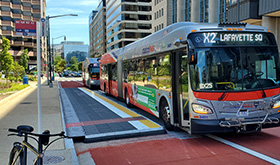Public Hearing Testimony of Bill 24-656 and Bill 24-566
Public Hearing: Bill 24-565, Safe Routes to School Expansion Regulation Amendment Act of 2021 and Bill 24-566, Walk Without Worry Amendment Act of 2021
Testimony of Everett Lott, Director, District Department of Transportation
Before the Committee on Transportation and the Environment
Council of the District of Columbia
Mary Cheh, Chairperson
Monday, March 14, 2022
12:00 p.m.
Virtual Hearing















